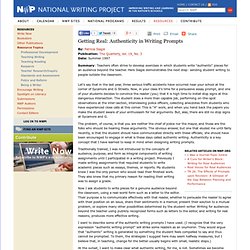

Stop, Thief! How To Deter People From Copying Your Blog Content. The discussion started on this blog with my ”Dear Plagiarist” post, continued, rather heatedly, on Facebook, then was picked up by Sue Lyon Jones’ article on plagiarism on Barbara Hoskins Sakamoto’s Teaching Village blog where she explained some of the basics of the law related to this issue.

Today, Sue picks up the topic again and in a special guest post for TEFL Matters continues with advice on how to avoid having your content plagiarised. It’s great to have Sue right here in my TEFL Matters ‘front parlour’!!! By Sue Lyons Jones In Marisa Constantinides’s passionate and heartfelt post, “Dear Plagiarist“, she gives vent to the frustration, hurt and disappointment that many of us feel when others copy our work without asking first, or seek to pass it off as something that they have created themselves. Image credit: Petr Kratochvil PublicDomainPictures.net Here are three good reasons why publishing full RSS feeds is worth a rethink, if it is something that you currently do: Step 1: Step 2: Getting Real: Authenticity in Writing Prompts. By: Patricia Slagle Publication: The Quarterly, Vol. 19, No. 3 Date: Summer 1997 Summary: Teachers often strive to develop exercises in which students write "authentic" pieces for an audience beyond the teacher.

Here Slagle demonstrates the next step: sending student writing to people outside the classroom. Let's say that in the last year, three serious traffic accidents have occurred near your school at the corner of Sycamore and G Streets. Now, in your class it's time for a persuasive essay prompt, and one of your students decides to convince the reader (you) that it is high time to install stop signs at this dangerous intersection. The student does a more than capable job, performing on-the-spot observations at the inter-section, interviewing police officers, collecting anecdotes from students who have experienced close calls at this corner.
Now I ask students to write pieces for a genuine audience beyond the classroom, using a real-world form such as a letter to the editor. 30 Ideas for Teaching Writing. Summary: Few sources available today offer writing teachers such succinct, practice-based help—which is one reason why 30 Ideas for Teaching Writing was the winner of the Association of Education Publishers 2005 Distinguished Achievement Award for Instructional Materials.

The National Writing Project's 30 Ideas for Teaching Writing offers successful strategies contributed by experienced Writing Project teachers. Since NWP does not promote a single approach to teaching writing, readers will benefit from a variety of eclectic, classroom-tested techniques. These ideas originated as full-length articles in NWP publications (a link to the full article accompanies each idea below). Table of Contents: 30 Ideas for Teaching Writing 1. Debbie Rotkow, a co-director of the Coastal Georgia Writing Project, makes use of the real-life circumstances of her first grade students to help them compose writing that, in Frank Smith's words, is "natural and purposeful.
" ROTKOW, DEBBIE. 2003. Back to top 2. 3. 4.